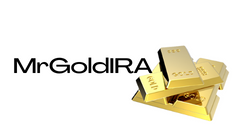Employers in the public sector and other qualified organizations may offer 403b or 457 plans. Learn more about these plans to see which one is right for you.
Many people are familiarized with 401k plans. These plans are sponsored by employers. These plans are available to qualified employees who can defer part or all of their paycheck before taxes. In certain cases, the employer may match some contributions.
Public-sector institutions at the federal and state levels, like schools, cannot generally offer new plans under the 401k plan. However, this doesn't mean that public-sector workers are left without employer-sponsored retirement savings options. There are two common options: 403b plans and 457 plans. Continue reading to find out more about 457b and 403b plans. Also, learn the difference between them as well as the contribution limits.
The 457 Plan
A 457 plan is one of the best options for public-sector employees. There are two types. You must work in a state or local government to be eligible for a 457 plan. Federal employers cannot offer these plans.
457b Plan
There are two types 457b plans. Tax-exempt and governmental. Sponsorship of governmental 457b plans by the state, local governments, or certain political organizations is possible. Employers that are not state, local or political governments or agencies, but are tax-exempt organizations can sponsor 457b plans. However these plans are restricted to highly-paid employees or managers at the highest levels.
Participation in governmental 457b plans is open to any qualified employee or contractor. These plans don't tax contributions; money disbursed during retirement, or due to other events, is taxed.
You can receive distributions from your 457b plan for certain events:
- When you turn 70 1/2, required distributions begin.
- At 59 1/2, you can start taking optional distributions.
- A qualifying emergency exists or you are in hardship.
- You are not employed by the sponsoring employer when the plan ends.
Early withdrawal penalties are not applicable to 457b plans. You may be subject to a penalty if you withdraw non-457b funds from a plan 457b, such as a 401k, and roll them into a plan 457b.
457f Plan
Non-taxable entities, which aren't state or local employers, can opt for the 457f plan. This plan is only for those in high-paying positions or the top of the management. These plans are usually designed to offer a retirement perk to executives.
457b Plan Contribution Limits
Like other tax-deferred retirement plans 457b plans have contribution limits. You can only transfer a limited amount of your salary to a 457b account each year before taxes. How much depends on your age, how far you are from retirement, and what your contribution limits are.
The 2022 contribution limit for 457b plans is $20,500. This applies to most people. If your salary is less than $20,500, it can be included in the total. Each year, the contribution limits may change. They were $19,500 in 2020 and 2021. This total includes employer matching amounts.
Senior citizens who have not yet made retirement contributions can make greater annual contributions to their 457b plans through the IRS. Two situations allow extra contributions:
- You are in your final three years before retirement. From 2022, you will be able to contribute up to $41,000 annually to a 257b pension plan.
- You are 50 years old or older and wish to contribute to your retirement. You can contribute as much as $27,000 annually starting in 2022.
The 403b Plan
403b plans are also known as tax-sheltered annuity plan.
- Certain types of ministries, churches or ministers
- Qualifying 501(c), tax-exempt organizations
- Organizations for public education
- States regarding public school teachers
All eligible employees can join a 403b plan if an employer has it set up. Similar to 457b plans contributions to 403b plans below the annual threshold can be made before federal taxes will be deducted. This means that taxes are not paid until the beneficiary takes a distribution. This is usually in retirement, but sometimes earlier.
You can take distributions from your 403b plan at any one of these events:
- You reach 59 1/2 years old (or any time thereafter).
- You are permanently disabled and unable to work, or at the same level.
- Your 403b benefits are transferred to your beneficiary when you die.
- You can leave your employer sponsoring you for any reason. In this instance, your 403b funds can be rolled into another qualified retirement fund.
The IRS states that employers who set up 403b plans can create hardship distribution and loan parameters. This is not a requirement. However, employers are allowed to create parameters for hardship distributions and loans. It's important that you read the fine print in your 403b plan to ensure you know if you can access the money with no penalties before you reach retirement age.
403b Plan Contribution Limits
There are several ways to contribute to a 403b program. First, elective deferrals are available. When people talk about retirement plan contribution, this is what they mean. A percentage of your salary is usually withheld from your paycheck to be deposited into your 403b account. This amount is withheld prior to taxes. It is not part of your income for tax calculations.
Employer contributions that are not elective refer to the amount the employer contributes to the fund. This could be a match, for example, your employer may match up 3% of your salary. This could be part of a benefit structure where the employer funds a specific amount of retirement.
After you have met the annual contribution limits, you are allowed to continue making after-tax contributions. These contributions can speed up your retirement fund's growth, but they do not provide tax deferral.
Each year, the IRS establishes contribution limits for 403b plans. The general contribution limit for 403b plans is $20,500 per year in tax-deferred contributions by employees as of 2022. The total contribution of both employer and employee cannot exceed $61,000 annually.
For 403b plans, catch-up contributions can be made. As of 2022, those 50 years old and older can contribute an additional $6,500 annually. Catch-up contributions are also possible for those who have 15 years of service with the exact same employer and same 403b plan. This catch-up limit is $3,000. This amount can be reduced depending on the number of years the individual has served and the amount they have contributed.
Which plan should you choose?
You may not be able to choose whether you wish to join an employer-sponsored, tax-deferred retirement program. Your employer may limit your options. In that case, you need to consider whether you have other options.
To help you choose the right plan for you, it is important to weigh the pros and cons of both 403b or 457b plans.
The pros and cons of 457b plans
The best thing about 457b plans? You can access your funds immediately after you retire or have a qualified emergency.
You can also catch up on your retirement savings by these plans, which allow you to double your contributions over the last three years. You also get the usual catch-up contributions opportunities once you reach 50. If you are a participant in a 457b plan you can roll your funds into a qualified 401k or Roth IRA if your employer is no longer available.
The downside is that any employer contribution counts towards the applicable contribution limits. These plans are less likely to offer great match scenarios, making it more difficult to maximize your retirement savings.
The pros and cons of 403b plans
If your employer contributes, you can usually have a higher annual contribution to a 403b plan. The employer contribution is not counted towards the maximum contribution you can make. In 2022, for example, the maximum amount employees can contribute to a 403b plan was $20,500. You and your employer can each contribute $61,000 each year.
You can make catch-up contributions to a 457b plan. However, you may not be eligible for the maximum 457b plan catch up allowances. If your employer has emergency withdrawal or loan options, you can only access funds in a 403.b plan before age 59 1/2.
How to choose the right plan for you
The 457b plan's catch up contribution limits make it more appealing if you are looking to save more for retirement. If your employer matches your contributions well, you might be able to make more in a 403b plan.
Can you have both a 403b or a 457b?
You can have both a 403b or 457b plan in certain cases. If your employer offers both types, and allows you to contribute to them both, this is possible.
You can maximize your retirement savings by having both types. By diversifying your retirement savings, you can reap the benefits of both plan types while minimizing some of the risks and maximizing the pros.
Our Take
It is up to you to decide what retirement plan works best for you. You should consider your options, your ability and future financial goals. A single retirement fund won't be enough in many cases to ensure your success in the future. You may want to look at wealth-building and investment opportunities beyond those offered by your employer as part of your retirement planning.
Personal Capital can help you learn more about your options, and to manage your financial life in a way that is more informed.
Frequently Asked Questions
Can I buy Gold with my Self-Directed IRA?
However, gold can only be purchased with your self-directed IRA. To do so, you must first open a brokerage account at TD Ameritrade. If you already have a retirement account, funds can be transferred to it.
The IRS allows individuals to contribute up to $5,500 annually ($6,500 if married and filing jointly) to a traditional IRA. Individuals are allowed to contribute $1,000 each ($2,000 if married or filing jointly) to a Roth IRA.
If you do decide that you want to invest, it is a good idea to buy physical bullion and not in futures. Futures contracts are financial instruments that are based on gold's price. They allow you to speculate on future prices without owning the metal itself. However, physical bullion is real gold or silver bars you can hold in your hands.
How is gold taxed in Roth IRA?
An investment account's tax is calculated based on the current value of the account, and not on what you paid originally. So if you invest $1,000 in a mutual fund or stock and then sell it later, any gains are subject to taxes.
The money can be withdrawn tax-free if it's deposited in a traditional IRA (or 401(k)). Taxes are only charged on capital gains or dividends earned, which only apply to investments longer than one calendar year.
Each state has its own rules regarding these accounts. Maryland is an example of this. You must withdraw your funds within 60 calendar days of turning 59 1/2. You can delay until April 1st in Massachusetts. And in New York, you have until age 70 1/2 . To avoid penalties, plan ahead so you can take distributions at the right time.
Can the government take your gold?
Your gold is yours and the government cannot take it. It's yours, and you earned it by working hard. It belongs to you. But, this rule is not universal. Your gold could be taken away if your crime was fraud against federal government. Your precious metals can also be lost if you owe tax to the IRS. However, if you do not pay your taxes, you can still keep your gold even though it is considered property of the United States Government.
How can you withdraw from an IRA of Precious Metals?
First, you must decide if you wish to withdraw money from your IRA account. Then make sure you have enough cash to cover any fees or penalties that may come with withdrawing funds from your retirement plan.
An IRA is not the best option if you don't mind paying a penalty for early withdrawal. Instead, open a taxable brokerage. If you decide to go with this option, you will need to take into account the taxes due on the amount you withdraw.
Next, figure out how much money will be taken out of your IRA. This calculation will depend on many factors including your age at the time of withdrawal, how long the account has been in your possession, and whether you plan to continue contributing towards your retirement plan.
Once you know how much of your total savings to convert to cash, it's time to choose the type of IRA that you want. Traditional IRAs allow you to withdraw funds tax-free when you turn 59 1/2 while Roth IRAs charge income taxes upfront but let you access those earnings later without paying additional taxes.
Once you have completed these calculations, you need to open your brokerage account. Brokers often offer promotional offers and signup bonuses to encourage people into opening accounts. It is better to open an account with a debit than a creditcard in order to avoid any unnecessary fees.
When you finally get around to making withdrawals from your precious metal IRA, you'll need a safe place where you can store your coins. Some storage areas will accept bullion, while others require you to purchase individual coins. Before you choose one, weigh the pros and cons.
Because you don't have to store individual coins, bullion bars take up less space than other items. You will need to count each coin individually. You can track their value by keeping individual coins.
Some people prefer to keep coins safe in a vault. Others prefer to store them in a safe deposit box. No matter what method you use, it is important to keep your bullion safe so that you can reap its benefits for many more years.
How much gold should you have in your portfolio?
The amount you make will depend on the amount of capital you have. If you want to start small, then $5k-$10k would be great. As your business grows, you might consider renting out office space or desks. This will allow you to pay rent monthly, and not worry about it all at once. Only one month's rent is required.
It is also important to decide what kind of business you want to run. In my case, I am running a website creation company, so we charge clients around $1000-2000/month depending on what they order. You should also consider the expected income from each client when you do this type of thing.
If you are doing freelance work, you probably won't have a monthly salary like I do because the project pays freelancers. You might get paid only once every six months.
You must first decide what kind and amount of income you are looking to generate before you can calculate how much gold will be needed.
I recommend starting with $1k-$2k in gold and working my way up.
How much should your IRA include precious metals
It's important to understand that precious metals aren't only for wealthy people. You don't have to be rich to invest in them. There are many ways that you can make money with gold and silver investments, even if you don't have much money.
You might consider purchasing physical coins, such as bullion bars and rounds. Shares in precious metals-producing companies could be an option. You might also want to use an IRA rollover program offered through your retirement plan provider.
You will still reap the benefits of owning precious metals, regardless of which option you choose. They are not stocks but offer long-term growth.
And, unlike traditional investments, their prices tend to rise over time. You'll probably make more money if your investment is sold down the line than traditional investments.
Should you Invest In Gold For Retirement?
The answer will depend on how many dollars you have saved so far and whether you had gold as an investment option at the time. If you're unsure about which option to choose then consider investing in both.
In addition to being a safe investment, gold also offers potential returns. It is a good choice for retirees.
While many investments promise fixed returns, gold is subject to fluctuations. Its value fluctuates over time.
But this doesn't mean you shouldn't invest in gold. It just means that you need to factor in fluctuations to your overall portfolio.
Another advantage of gold is its tangible nature. Gold can be stored more easily than stocks and bonds. It's also portable.
As long as you keep your gold in a secure location, you can always access it. There are no storage charges for holding physical gold.
Investing in gold can help protect against inflation. It's a great way to hedge against rising prices, as gold prices tend to increase along with other commodities.
It's also a good idea to have a portion your savings invested in something which isn't losing value. Gold usually rises when the stock market falls.
You can also sell gold anytime you like by investing in it. Like stocks, you can sell your position anytime you need cash. You don’t even need to wait until retirement to liquidate your position.
If you do decide to invest in gold, make sure to diversify your holdings. Do not put all your eggs in one basket.
Don't buy too many at once. Start small, buying only a few ounces. Add more as you're able.
The goal is not to become rich quick. Rather, it's to build up enough wealth so you won't need to rely on Social Security benefits.
Gold may not be the most attractive investment, but it could be a great complement to any retirement strategy.
Statistics
- (Basically, if your GDP grows by 2%, you need miners to dig 2% more gold out of the ground every year to keep prices steady.) (smartasset.com)
- Gold is considered a collectible, and profits from a sale are taxed at a maximum rate of 28 percent. (aarp.org)
- Indeed, several financial advisers interviewed for this article suggest you invest 5 to 15 percent of your portfolio in gold, just in case. (aarp.org)
- Contribution limits$6,000 (49 and under) $7,000 (50 and up)$6,000 (49 and under) $7,000 (50 and up)$58,000 or 25% of your annual compensation (whichever is smaller) (lendedu.com)
- If you accidentally make an improper transaction, the IRS will disallow it and count it as a withdrawal, so you would owe income tax on the item's value and, if you are younger than 59 ½, an additional 10% early withdrawal penalty. (forbes.com)
External Links
bbb.org
wsj.com
- Saddam Hussein's Invasion Helped Uncage a Bear In 1990 – WSJ
- Are you interested in keeping gold in your IRA at-home? It's Not Exactly Legal – WSJ
irs.gov
cftc.gov
How To
3 Ways to Invest in Gold for Retirement
It's important to understand how gold fits in with your retirement plan. There are many ways to invest in gold if you have a 401k account at work. It is also possible to invest in gold from outside of your work environment. One example is opening a custodial accounts at Fidelity Investments if an IRA (Individual Retirement Account), if you already own one. Or, if you don't already own any precious metals, you may want to consider buying them directly from a reputable dealer.
These are three simple rules to help you make an investment in gold.
- Buy Gold with Cash – Avoid using credit cards or borrowing money to fund investments. Instead, instead, transfer cash to your accounts. This will help protect you against inflation and keep your purchasing power high.
- Own Physical Gold Coins – You should buy physical gold coins rather than just owning a paper certificate. Physical gold coins are easier to sell than certificates. There are no storage fees for physical gold coins.
- Diversify Your Portfolio. Never place all your eggs in the same basket. In other words, spread your wealth around by investing in different assets. This will reduce your risk and give you more flexibility in times of market volatility.
—————————————————————————————————————————————————————————————-
By: Personal Capital
Title: 403b vs. 457: What’s the Difference?
Sourced From: www.personalcapital.com/blog/retirement-planning/403b-vs-457/
Published Date: Tue, 06 Dec 2022 00:17:07 +0000



















